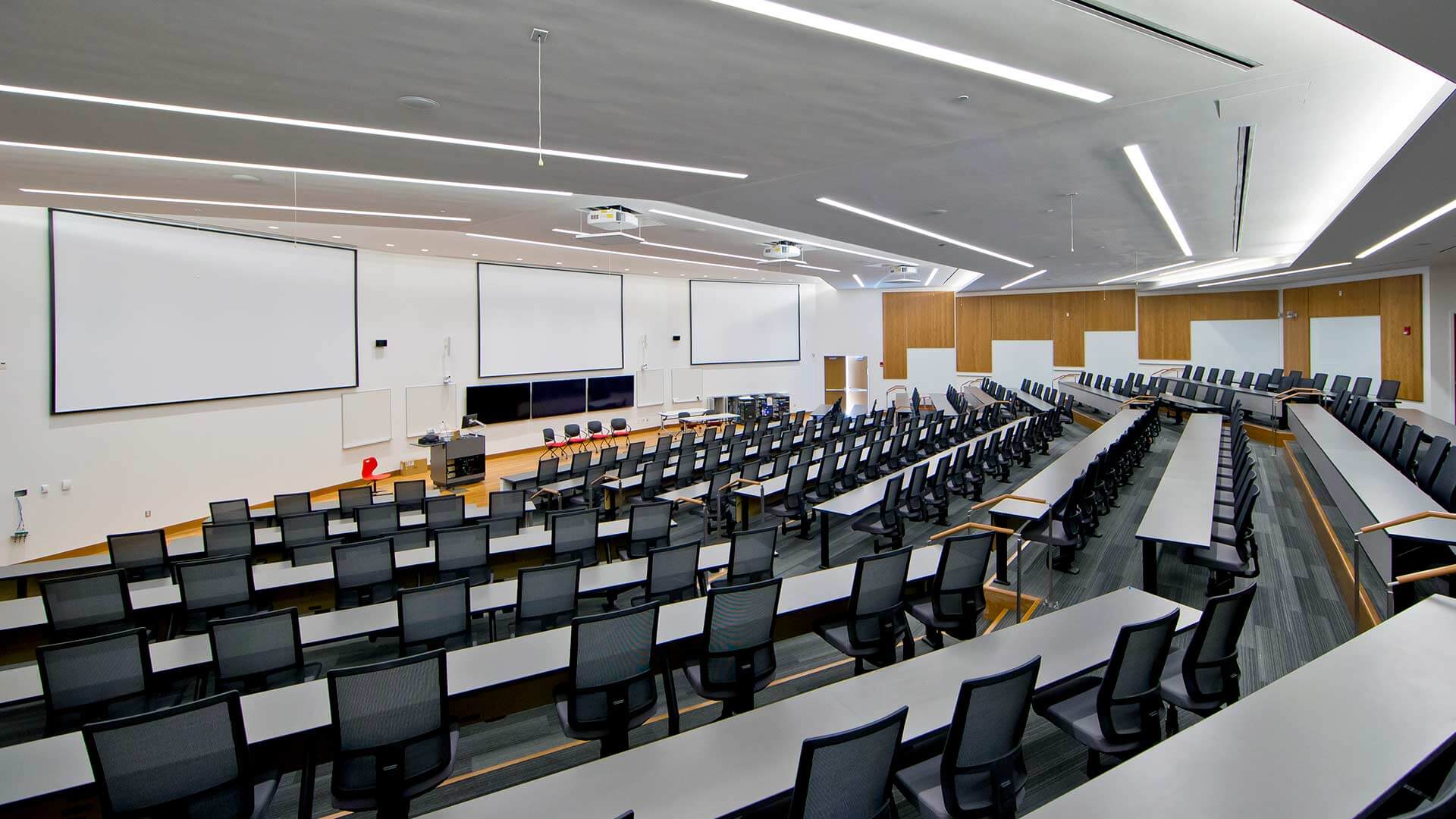- November 20, 2019
- By Annie Krakower
Traditional lecture halls ace the test for, well, lectures. But with teaching and learning constantly evolving, they’re just one option instructors can choose from as the University of Maryland works to address a range of classroom needs.
To promote more collaborative, student-centered instruction, UMD is expanding the number of TERP (Teach, Engage, Respond and Participate) Classrooms, new or renovated spaces with flexible seating and enhanced technology to encourage seamless team-based activity and different teaching and learning styles.
“It’s really about breaking down the barrier between instructor and student and providing more direct access—think ‘guide on the side’ rather than ‘sage on the stage,’” said Hilary Gossett, assistant director of academic facilities. “The goal was to transform the student experience.”
In 2013, UMD debuted its first TERP Classroom, and now they total 52 rooms across campus, representing 15% of the total classroom inventory. Twenty-one TERP classrooms are in new buildings—like the Brendan Iribe Center for Computer Science and Engineering and the Edward St. John Teaching & Learning Center—and the rest are renovated spaces in buildings like Tawes Hall and H.J. Patterson Hall. This year saw the creation of seven new TERP classrooms, while 10 existing rooms were converted to TERP style.
A user experience study conducted by the university’s Teaching and Learning Transformation Center (TLTC) found that students thought TERP Classrooms made courses seem closer knit, appreciated that the instructor could move around more easily, and liked the many whiteboards and screens.
The goal is to have 70 TERP Classrooms by 2022, Gossett said, but the spaces aren’t one-size-fits-all. Take a tour below to learn more about the four types of TERP Classrooms:

Eye2Eye
Wheeled desks and chairs, some with integrated storage, allow for quick classroom reconfiguration and encourage interactive activities. For example, lecturer Nicole Mogul, who teaches an engineering ethics course as well as classes in the College Park Scholars Science, Technology & Society program, uses the Eye2Eye style to have students form circles or pair up to create storyboards of ethical case studies.
“I’m constantly able to change the beat of the classroom—I can make it more intimate or make it more public,” Mogul said. “It’s just fantastic to be able to have the flexibility. I can make my classroom into a new classroom in 10–15 seconds.”

Tiered-Collaborative
Seating is arranged in tiers that are two rows deep, and the chairs in the front row can turn 180 degrees to enhance teamwork. Jennifer Littlefield, a lecturer and director of undergraduate studies in the School of Public Policy, used the classroom style to have students in her “Foundations of Public Policy” class vote on issues and pair up to discuss.
“It’s a large classroom, but it doesn’t feel large,” Littlefield said. “The pairing is a lot easier in that collaborative space than in really tight rooms.”

6Round
Round tables seating six students each are surrounded by projector screens and marker boards on multiple walls, and wide aisles allow the instructor to easily circulate around the space without a traditional “front” to the classroom. Scott Roberts, director of instructional excellence and innovation in the TLTC and a senior psychology lecturer, uses a 6Round room in his “Introduction to Psychology” and “The Psychology of Evil” courses to facilitate team discussions about topics like the effects of exposure to violent videogames.
“The structure allowed me to have the students be the ones taking the lead rather than me,” Roberts said. “When I was teaching ‘Psychology of Evil’ (in a traditional auditorium), it was much more physically difficult for students to turn around and have meaningful discussions in small groups.”

Media Share
Peninsula-style tables each seat six students and come equipped with a shared screen around which the students can collaborate. Deborah Mateik, director of learning technology design, teaches a TLTC “Academic Technologies” course and found the Media Share style helped students critique and build webpages as a team.
“It made them all focus on one thing,” Mateik said. “There was only one keyboard, so when they started clicking around to navigate their way through, they all had the same experience at the same time.”
Topics
Campus & CommunityTags
Student Experience